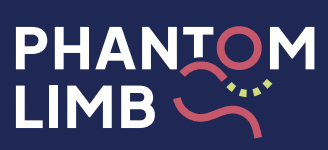UNDERSTANDING Phantom Limb PAIN
Understanding Your Phantom Limb Pain: Unlocking the Neurological Puzzle
If you suffer from phantom limb pain, you appreciate that the pain is just as real as any other, and the considerable impact this can have. This mysterious and often bewildering phenomenon affects the majority of individuals who have undergone amputation, causing them to experience pain or discomfort in a limb that no longer exists. To better understand phantom limb pain, we need to delve into the complex workings of the brain and nervous system.
Phantom limb pain arises from the brain’s attempt to reorganise itself after limb loss. When a limb is amputated, the brain’s map of the body becomes disrupted, and no longer accurately represents the body. As a result, the brain continues to receive signals from the remaining nerves in the residual limb. These signals are then misinterpreted, leading to the perception of pain in the absent limb.
To grasp this phenomenon, think of the brain as a master storyteller. It receives signals from the nerves, much like receiving messages from the body. But when a limb is amputated, the brain creates its own narrative based on the incomplete information it receives. It conjures sensations that mimic those of a real limb, but without the physical presence.
Phantom limb pain is not unlike the experience of a “phantom” phone vibration or itch that some people encounter. Just as our brain sometimes tricks us into believing our phone is vibrating in our pocket when it isn’t, it can also generate the illusion of pain in a missing limb.
Unravelling the exact causes of phantom limb pain is an ongoing pursuit in the scientific community. Researchers believe that a combination of factors, including nerve damage during amputation and changes in the brain’s wiring, contribute to this phenomenon. The brain’s plasticity—the ability to reorganize and adapt—plays a crucial role in the development of phantom limb pain.
Understanding the neurological underpinnings of phantom limb pain is the first step toward managing and finding relief from this condition. While there is no one-size-fits-all solution, approaches such as mirror therapy, Sensory Discrimination Training (SDT), Transcutaneous Electrical Nerve Stimulation (TENS), and virtual reality have shown promise in alleviating phantom limb pain.
Remember, you are not alone in your journey. Connect with healthcare professionals who specialise in pain management and seek support from others who share similar experiences.
By unravelling the neurological puzzle together, we can work towards a brighter future where phantom limb pain becomes a challenge that can be overcome.
We invite you to join our dedicated phantom limb pain support group on Facebook. Connect with others who understand your experiences, share your own journey, and learn from the collective wisdom of our supportive community. Together, we are stronger!
Myth Busting

MYTH
Phantom limb pain is in your head?

TRUTH
Phantom limb pain develops because of a neurological nerve issue after amputation.

MYTH
If you don't get phantom limb pain right away, you won't get it at all.

TRUTH
Phantom limb pain can develop at different times and the experience and length of time varies significantly across amputees.

MYTH
There's no way to treat phantom limb pain.

TRUTH
Several treatments exist to help treat phantom limb pain including: mirror therapy, box therapy, TENs, sensory discrimination training, compression and music therapy.

MYTH
Drugs are the only real solution to help pain.

TRUTH
There are several drug-free therapies, treatments and products available on the market to try.
